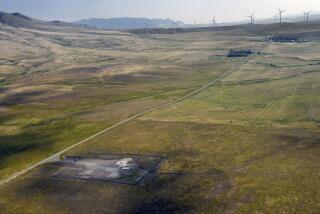AF Tells How Emergency Radio Network Would Work
- Share via
WASHINGTON — The Air Force on Friday filed a draft statement with the Environmental Protection Agency on how its proposed $1-billion ground wave emergency radio network would operate during and after a nuclear attack.
The Ground Wave Emergency Network, with the acronym GWEN, envisages eventual construction of 127 relay towers placed about 200 to 300 miles apart across the nation and construction of 228 sending-receiving stations. Ground-hugging, low-frequency radio waves would be transmitted by the system.
While filing the draft environmental impact statement, which does not say where the towers would be placed, the Air Force also announced a new series of public hearings to seek comment on the project that will involve erection of the 300-foot-high towers in most of the 50 states.
The hearings are scheduled for May 4 in Atlanta; May 6 in Dallas, and May 8 in San Francisco. Public comments will be incorporated in the final impact statement expected to be published in August.
Opposition to the proposed network was expressed by many groups, including environmentalists, when the project was announced last June.
They protested that GWEN would become a prime target in a nuclear war and would constitute “another step in the arms race,” since the network would tend to prove that the United States intends to fight a protracted nuclear war.
One group at Amherst, Mass., a possible GWEN site, sent out circulars saying, “The Pentagon wants to use our backyard for fighting a nuclear war.”
The Air Force has countered that the network actually will strengthen deterrence and is needed to assure a secure command, control and communications network in the event of a surprise nuclear attack.
GWEN relay stations, to be automated and unmanned, would be immune to the damaging effects of electromagnetic pulse energy surges that occur during a high-altitude nuclear detonation, the Air Force said. The pulses would disrupt or destroy conventional communications, including telephone, radio and television.
More to Read
Sign up for Essential California
The most important California stories and recommendations in your inbox every morning.
You may occasionally receive promotional content from the Los Angeles Times.









